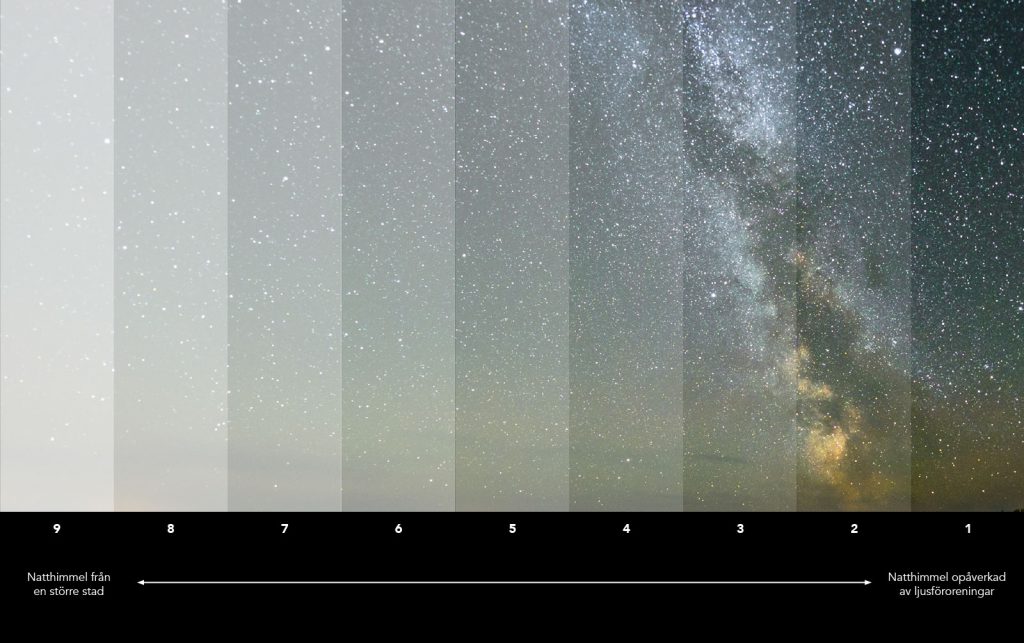When I turn off my headlamp, everything becomes pitch black. At first, I can’t see anything, not even my hand in front of me. Soon, however, my eyes begin to adjust, and above me, a starry sky so clear it gives me shivers slowly comes to life. This is how our ancestors experienced the night sky. Sparkling and clear. An overwhelming sense of humility and reverence settles within me.
Experiencing a truly star-filled night sky far from cities’ light pollution is a privilege few enjoy. Light from large population centers illuminates the sky for miles. In amateur astronomy, the Bortle scale is used to measure light pollution – 9 on the scale corresponds to the sky above a major city, where only the brightest stars can be seen, while 1 represents a truly dark night sky unaffected by light pollution.
Dark sky reserves have been established in several places around the world, such as Bodmin Moor Dark Sky Landscape in Great Britain, Møn and Nyord in Denmark, and Cherry Springs State Park in the USA. While we don’t have one yet in Jokkmokk, large areas consist of national parks and nature reserves that are largely free from light pollution and are rated as 1 on the Bortle scale.

Image: lightpollutionmap.info
Experiencing a truly dark night sky creates a very special feeling. The stars are truly countless. The Milky Way band stretches across the night sky, distant objects like the Andromeda Galaxy and M33 can be seen with the naked eye. The small open star cluster Pleiades sparkles.
Here we also have the magical northern lights, but on days without aurora, there’s a fantastic night sky to discover.


Links
